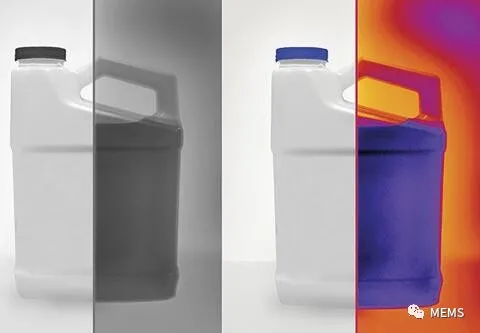As the infrared thermal imaging camera moves towards more intuitive, more economical, standardized and intelligent, its revenue becomes more considerable, and the infrared thermal imaging market is developing in full swing.
Infrared thermal imaging technology has only been used in high-end applications such as national defense and military, but in the past few decades, it has gradually become a more mainstream technology. As hand-held infrared thermal imager is becoming more and more popular in maintenance and electrical troubleshooting applications, people are increasingly aware of the industrial benefits of the technology, according to Maims. In 2020, the new crown epidemic, a large number of infrared thermal imaging solutions naturally poured into the market. Various infrared thermal imaging sensor techniques and cameras are used for heat detection, although technically, infrared thermal imaging sensors can only measure skin surface temperature.

Usually opaque plastic packaging in short-wave infrared (SWIR) transmittance is higher than in the visible range, so SWIR camera can easily detect the plastic barrel for SWIR light wave low transmittance or even strong absorption of substances. (Left). pseudo-color can provide the observer with prominent temperature changes without changing the temperature value of the base pixel (right figure).
Nevertheless, infrared thermal imaging is still very mysterious to many end users. Even skilled machine vision integrators may be helpless with non-visible light imaging. This is not unusual because humans lack the visual ability to perceive temperature visually.
To better understand the performance of infrared and thermal cameras, Users must understand the working principle of infrared thermal imaging camera and the physical principle involved. Unlike standard machine vision cameras operating in the visible spectrum (400 nm to 700 nm), Infrared cameras and thermal imager technology cover a wider spectrum, The spectrum is divided into three main bands :0.9μm to 1.7μm band belongs to short wave infrared (SWIR), μm 3 to 5 bands belong to medium-wave infrared (MWIR), The bands μm 8 to 14 are long-wave infrared (LWIR).
The spectral band is mainly defined by the characteristics of detector technology in various cameras. The spectral band comes from the sensitive wavelength of the detector material. According to scientific principles, the physics literature may classify infrared spectra in different ways.
Deep knowledge of short-wave infrared (SWIR)
Many common applications can benefit from detection in different bands, and not all infrared detection involves temperature measurement. Researchers used the physical properties of materials to explore the selective reflectivity, absorptivity and transmittance of the spectrum.
typically opaque plastic packaging, for example, has higher transmittance in the SWIR than in the visible range, so SWIR camera can easily detect substances in plastic drums that SWIR low transmittance or even strong absorptivity to light waves. As a result, the contrast of the SWIR image is sufficient to complete the inspection.
SWIR technology also applies to agriculture, which monitors crop and plant health, detects bruises or measures the sugar content of fruits. These applications use the reflectivity, absorptivity, or transmittance of some spectrum as the basic inspection method.
When measuring temperature with a SWIR camera, it is very important to understand the SWIR spectral region. Most of the signals generated by this spectrum are formed by reflected light, not by infrared radiation energy. This can be clearly illustrated by visible light standard machine vision applications.
measuring temperature with a SWIR camera requires a large amount of thermal energy to overcome reflected light and is recorded as radiation energy on the sensor. Therefore, when the temperature is below 400℃, it is usually meaningless to use a camera with a SWIR detector to complete the temperature calibration. features make SWIR cameras suitable for high temperature applications (e.g. imaging molten metal or checking process welds, etc).
Cost reduction, interface standards, smart cameras
despite these challenges and shortcomings, the importance of thermal imager in industrial and non-industrial imaging applications has become increasingly prominent. The existence of multiple factors contributed to this growth. Cost reduction can be said to be the most important factor. followed by the introduction of standard communication protocol GenICAM and standard physical interfaces. The goal of the GenICam is to provide a unified programming interface for all types of cameras, promulgated by the European Association of Mechanical Vision (EMVA), which has been established. The first was FireWire (which apple named data-transmission technology before the IEEE-1394 standards were set), now gigabit ethernet for most cameras.
Not long ago, users had to use their best programming skills to implement proprietary communication interfaces with the help of software development suites, only to find the next camera model incompatible. Camera manufacturers are moving towards more uniform communication standards, benefiting camera sales and promoting their wider adoption by system integrators and end customers. While thermal imager manufacturers continue to work towards full compliance with these standards, the situation does improve.
Recently, thermal imaging smart cameras have also broken out. Although there is still a big gap between thermal imaging and standard machine vision, thermal imaging intelligent camera will further promote the wide application of thermal imaging, blooming beautiful "infrared flower ".
A more economical thermal imaging technique will be introduced in next article.